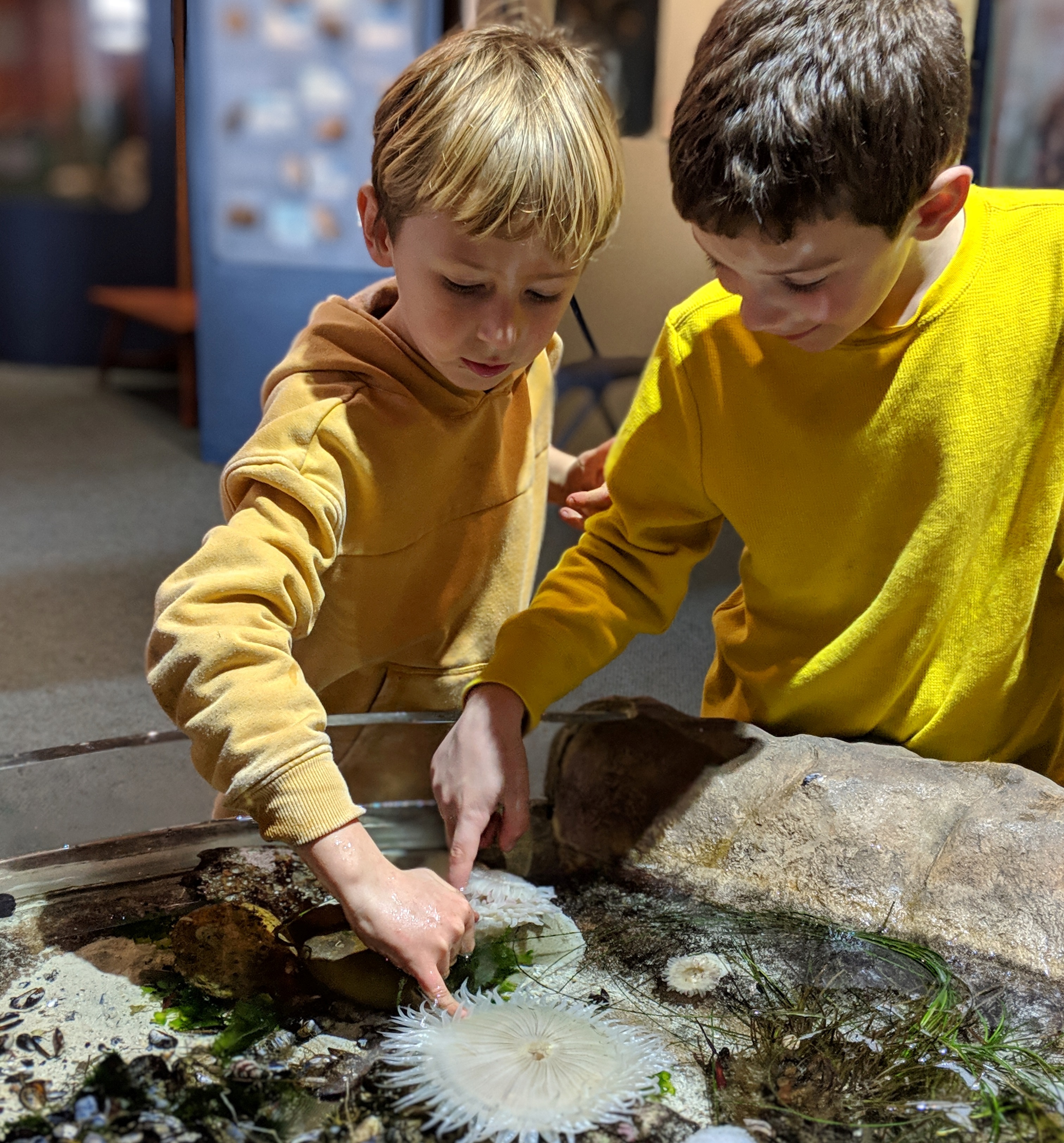Mount Madonna School first grade students recently visited a wonderful local resource – the Santa Cruz Museum of Natural History. During their visit students were able to carefully touch live marine life, hear from knowledgeable museum staff about local natural history and animal adaptations, and examine bird and mammal skeletons.
Students were eager, interested and engaged in the museum’s interactive learning exhibits.
“As they studied the skulls of different animals, students learned how the shape of an animal’s teeth indicate whether they are herbivores, carnivores, or omnivores,” shared teacher Cassia Laffin. “Flat teeth are indicative of a plant diet. Sharp teeth indicate that the animal eats meat. And both flat and sharp teeth indicate that the animal has a varied diet. Students were directed to take notice of the eye holes and their position. “Eyes on the side, likes to hide, eyes in the front, likes to hunt,” the students were told. Large eye sockets meant there was a high likelihood an animal was nocturnal. There was so much great info to take in! The museum docents were dynamic with big personalities that held the students’ interest. Our parent chaperones were also impressed with learning things that they did not know before!”
One activity included having the students walk around the museum and find various animals and see if they could figure out each animal’s adaptations. Afterwards, they came together and shared their findings. Habitats were also studied, with students learning how adaptations serve various animals in their environment.
Outside, students participated in a predator-prey game. They sat in a circle and had to sneak up on the docent in the center, using speed or silent approach and try to acquire a jar representing eggs which sat in front of the docent. The docent was blindfolded and relied on her sense of hearing to determine which direction the “predators” were approaching from. If she “sensed” them, she sprayed water from a bottle in their direction, and they had to return to their spot in the circle. If they were stealthy, they could acquire the jar and be victorious.
After their visit, the class visited the nearby beach for lunch and some sandy recreation!
“We built driftwood forts and had a grand time,” said Laffin.
“These children had a total blast learning about animal adaptations and enjoyed very much the free time at the beach,” shared parent chaperone Carmen Virgos. “Thank you teacher Cassia for another super fun field trip. These children are very fortunate to have this learning opportunity!”
Meanwhile, in class as part of this study unit, each first grader created an animal report, and then shared their reports and evaluated each other’s presentations, asking questions for clarification and offering compliments.
“My first grade son got a lot of information from the other students’ animal presentations,” commented parent Tom May. “He peppered me with information on the way home from school after seeing the other students share. Each day he shares things like ‘Dad, did you know that a type of boa lives in California? (and often the facts he shares with me are things I did not know!)’. He loves studying animals, and was so thrilled to go to the Santa Cruz County Museum of Natural History and have the hands-on experience from the touch pool and other exhibits.”
“Each student showcased different strengths and I see so much value in allowing students a chance to research and present to their classmates,” said Laffin. “It is their first report and a wonderful opportunity to grow comfortable in front of groups. I place great emphasis on creating opportunities for my students learn how to communicate creatively and effectively.”
Photos by Carmen Virgos
###
Contact: Leigh Ann Clifton, director of marketing & communications,
Nestled among the redwoods on 355 acres, Mount Madonna School (MMS) is a community of learners dedicated to creative, intellectual, and ethical growth. MMS supports its students in becoming caring, self-aware, discerning and articulate individuals; and believe a fulfilling life includes personal accomplishments, meaningful relationships and service to society. The CAIS and WASC accredited program emphasizes academic excellence, creative self-expression and positive character development. Located on Summit Road between Gilroy and Watsonville.






















